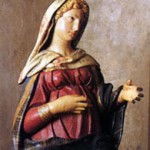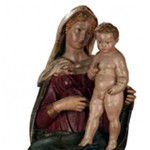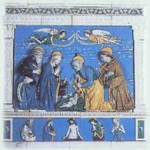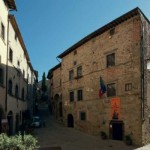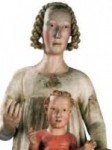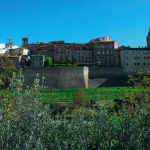The Anghiari Battle Museum
An ancient building Palazzo del Marzocco in the heart of the old town.
Anghiari, the place
A bastion erected in the centre of two eternal rivers and surrounded by a breathtaking landscape. Anghiari, the history: linked to the famous battle, celebrated by the genius of Leonardo da Vinci, a battle which
took place in 1440 and gave Tuscany its confines.
Anghiari, the memories
These are preserved in the Palazzo. Prehistoric tools, Roman remains, Medieval fragments of sculpture, ancient manuscripts, glazed ceramics and fire-arms.
This is a Palazzo Museum, but is also alive and dynamic, its doors open to everyone because it speaks of everyone, recounting history to keep alive the memories of everyone.
Prehistory
The collection of archeological objects in the museum began with the donation of thousands of stone tools and chippings to the City of Anghiari by the “Center of archeological and natural studies of Anghiari” when it closed down. The most significant tools, and some that are important for their size and antiquity, are displayed alongside some reconstructions and a tactile section where you can handle some of the reconstructions of the tools: flints, scrapers, spearheads.
Antiquity
The first archeological scientific excavaton in the town of Anghiari took place in 2006. Since then, several digs and careful research in the area has been made, with the invaluable help of a number of volunteers, allowing us to display some of the most important of the objects found, mostly from the Roman period. New lines of research have recently been opened because of the wonderful discovery of a Roman wine cellar in Palazzo Pretorio and also some amazing Etruscan finds inside the Cassero.
The Battle of Anghiari
The room dedicated to this event shows us its fascinating and complex history from historical, artistic and iconographic points of view. The reconstruction of the Battle of Anghiari has been made with a model including hundreds of hand-painted figures; an installation about the technique that Leonardo da Vince used for his painting of the Battle of Anghiari; a large quantity of information about this historical and artistic event which makes the perfect frame to the 18th century reproduction of Leonardo’s lost painting by A. Fedi e M. Carboni.
The history of Anghiari
A gate-latch, an ancient book and a number of objects which universally summarize the history of this Tuscan town. Discovering the events that revolved around the “Bolt of Anghiari” (the gate-latch), starting from 1450, is a useful exercise for us contemporaries. So too is finding two amazing pieces of evidence of a pilgrimage route along the Tiber valley. There are some beautiful drawings of views of Anghiari made by Pietropaolo Taglieschi in the first half of the 1600s, “photographs” of an almost unchanged historical center.
The fire-arms of Anghiari
The collection of antique fire-arms was a significant part of the “Exhibition of the fire-arms of Anghiari and Tuscan-Emilian Appennines” held in 1968. It finally gave us the opportunity to see altogether in one room the special ability of the Vallini, Cerboncelli, Guardiani, Matassi workshops that combined the technical knowledge of manufacturing with great artistic skills in chiseling and engraving. We thank the Bank of Anghiari and Stia Credito Cooperativo for lending them to the museum.
The pots of Anghiari
Anghiari’s pottery tradition has ancient origins and represented a very important and special artisan production: in this room it is possible to enjoy some examples of this work and see each step of the process from shaping to firing. The plate by Umberto Marinari, famous potter and decorator at the beginning of the 1900s is of particular interest. The present collection was donated to the town of Anghiari for the special exhibition “The pots of Anghiari” in 2005.


